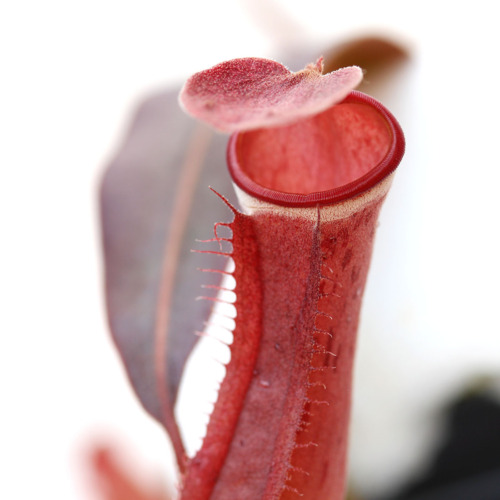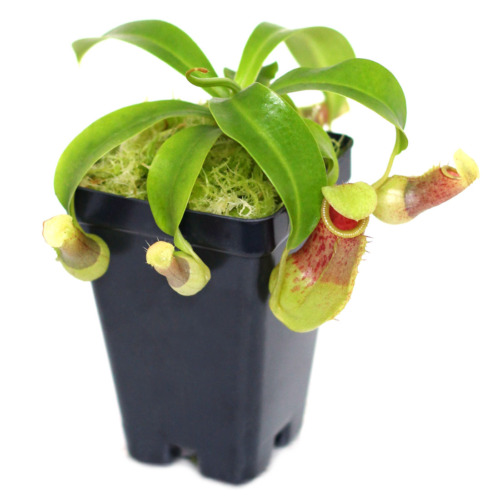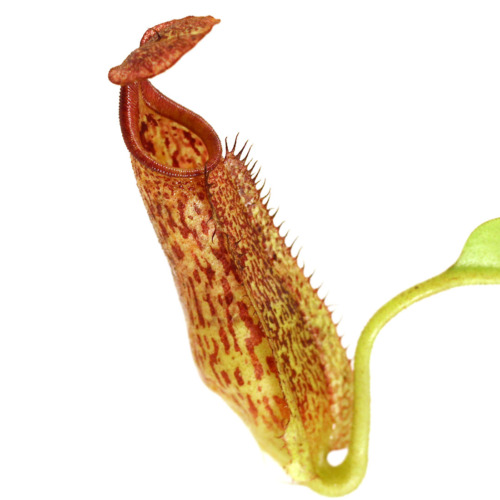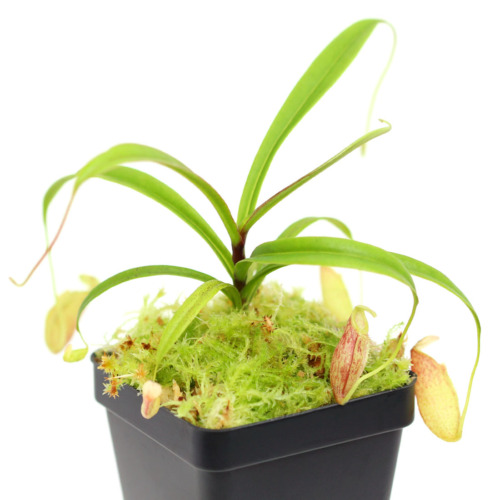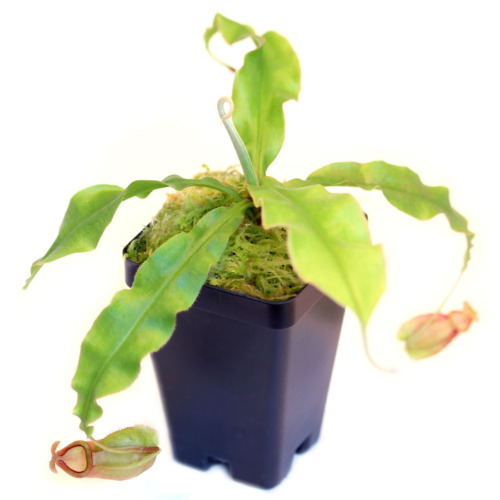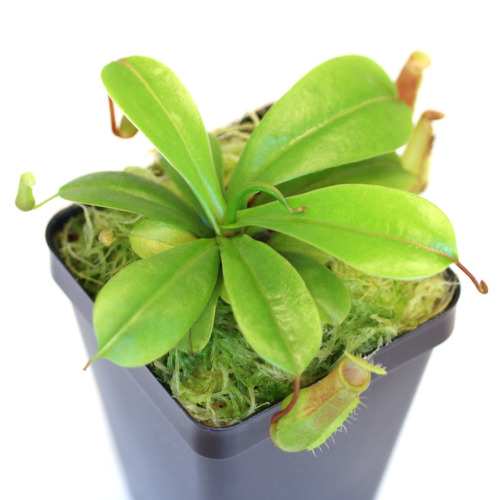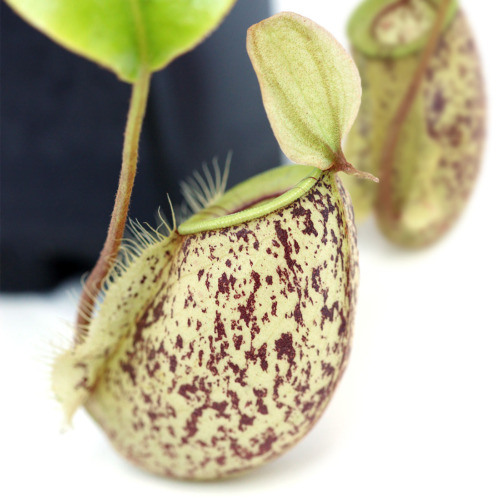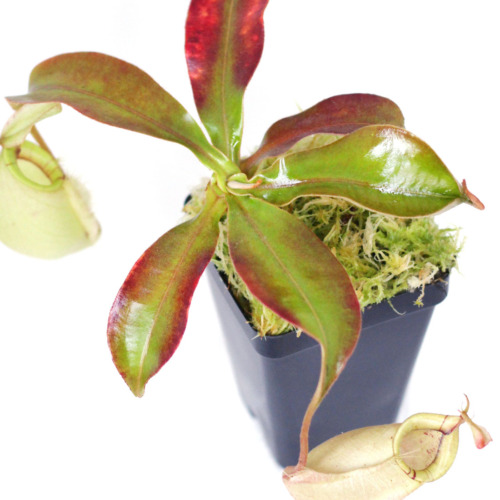Tropical Pitcher Plants (Nepenthes)
Tropical pitcher plants, or Nepenthes, are a type of carnivorous plant that form pitfall traps to catch their prey. The plant grows these pitcher traps at the end of tendrils extending from the tips of its leaves. Some species make pitchers sized only to catch small bugs while others grow large enough to eat entire rats!
Nepenthes pitchers are often brightly colored and produce nectar to lure prey to the pitcher lip (peristome). This nectar can be intoxicating for some insects. In a drunken state, these insects often find themselves perched on the peristome, only to slip into the pitcher’s fluids below. Here, they eventually drown and the pitcher digests and absorbs their nutrients.
Nepenthes pitcher plants grow in many areas of Southeast Asia with the largest concentrations in Borneo, Sumatra, the Philippines, Sulawesi, Indochina, and the Malay Peninsula. For the most part, they prefer open highland areas with nutrient-poor soil, high humidity, and plenty of rainfall. Only about 30 percent of Nepenthes species grow in hot lowland jungles.
The first Nepenthes pitcher plants was described in 1658. Over the years, with discovery of new species and the invention of the glass greenhouse and Wardian case, Nepenthes became highly sought after. By the 1800s, they grew in the private collections of wealthy individuals across Europe. However, with two world wars and the economic fallout to follow, their popularity waned for a time. Revival came in the early 1990s though and they have been prized in collections ever since.

